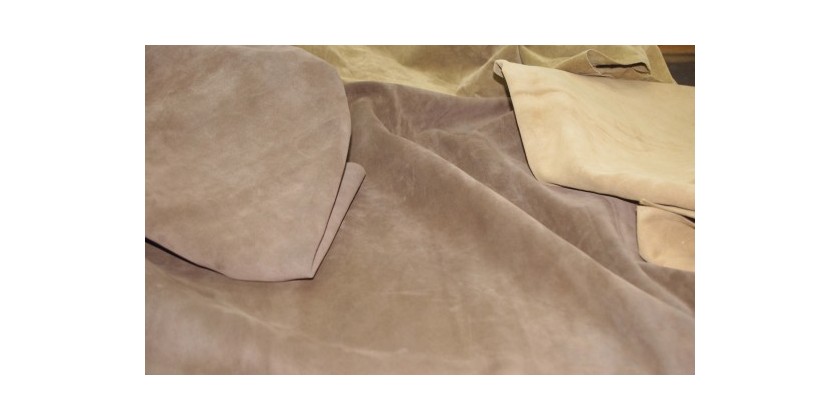Cow split leather for footwear
Created: April 10, 2018
Last updated: April 10, 2018

When it comes to footwear, the comfort of our feet is very important, as they are the base that supports our entire body, and when we choose a shoe that is handcrafted, it is important to look for one that is made with the highest quality leather. One of the most commonly used leathers in the manufacture of handcrafted footwear is the so-called cowhide split leather. This type of leather offers ideal characteristics for being worked by hand and also adapts perfectly to our foot. Cowhide split leather is one of the various techniques that exist for tanning leather. In cowhide, this is the most commonly used method, but not the only one. The choice of tanning technique will be directly related to two factors: the type of leather and the use that will be given to it.
In this case we are going to focus on cowhide split leather for handmade footwear. The technique consists of obtaining leather from the layers of skin that are closest to the flesh of the animal, that is, all the lower layers that are obtained after separating the most superficial layer, since more than one piece of leather can be obtained depending on the thickness we want and the use we want to give it.
When it comes to footwear, the comfort of our feet is very important, as they are the base that supports our entire body, and when we choose a shoe that is handcrafted, it is important to look for one that is made with the highest quality leather. One of the most commonly used leathers in the manufacture of handcrafted footwear is the so-called cowhide split leather. This type of leather offers ideal characteristics for being worked by hand and also adapts perfectly to our foot. Cowhide split leather is one of the various techniques that exist for tanning leather. In cowhide, this is the most commonly used method, but not the only one. The choice of tanning technique will be directly related to two factors: the type of leather and the use that will be given to it.
In this case we are going to focus on cowhide split leather for handmade footwear. The technique consists of obtaining leather from the layers of skin that are closest to the flesh of the animal, that is, all the lower layers that are obtained after separating the most superficial layer, since more than one piece of leather can be obtained depending on the thickness we want and the use we want to give it.
One of the main advantages of suede is that it allows us to obtain a leather with a fine finish, which attracts you just by looking at it and at a lower cost. Another benefit to highlight is that these are very uniform leathers without marks since they are protected by the most superficial layer of the leather.
According to the guide made by the Tandy Leather Company, (one of the largest leather distributors in the United States and recognized in the world), the measurement used to indicate the thickness of the skin is equivalent to 1/64 of an inch, this measurement, the ounce, has a certain range of margin of error in the equivalences to exact measurements since the skin by nature will consist of different thicknesses and it is difficult for a piece of leather to be totally uniform in its thickness throughout its surface. As we have seen before, cowhide split leather is cheaper due to its lower cost in tanning time without giving up at any time the quality and durability offered by the outer skin.
This type of leather can be found in other products, in addition to footwear, we can see many garments or accessories made with this leather.
Cowhide split leather is a versatile leather that offers the comfort, support and freshness that our feet need, as it is highly flexible and breathable, allowing us to create a wide variety of designs in footwear and other items. Its versatility makes it a very popular leather for counterfeiting, which is why ethical organisations and traders demand the correct labelling of the origin of the leather used to make the product. In addition, it is a leather that, with a little maintenance, will significantly extend its years of use.
The only occasion in which suede is not the best choice is in designs with dyed prints, since according to the Tandy guide, the only leathers suitable for this finish are surface leathers, which are the only ones capable of absorbing the dye properly following a very delicate process with very special vegetable dyes.
In Jose de Mora We regularly use this type of leather to make our footwear, as well as other types of leather, but always carefully selecting the best suppliers to offer only the highest quality products.


